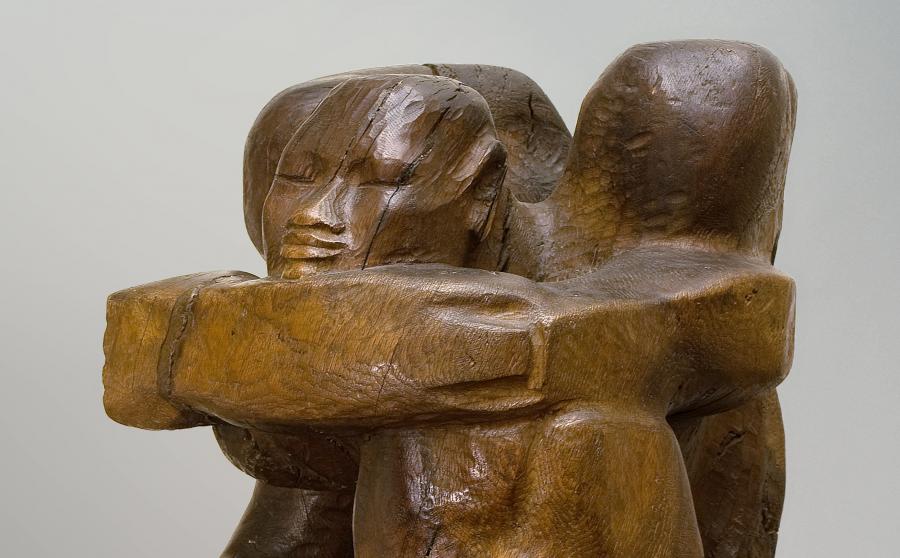The Night of Oppède
Information sur l’artiste
Étienne-Martin [Loriol, 1913 - Paris, 1995]

La Nuit d'Oppède, 1942.
Image © Lyon MBA - Photo Alberto Ricci
The Night of Oppède follows one of Étienne-Martin's recurrent themes, the night : associated with dreams and permeated with an undercurrent of mysticism, the artist was also inspired by German Romantic literature and very much influenced by the occult. Etienne-Martin was interested by Taoism, Hinduism, and the Asceticism present in certain branches of Catholicism.
The Night of Oppède depicts a winged figure similar to that in Night II, sculpted in 1935 from a block of stone (Lyon, museum of Fine Arts). Oppède is a reference to the village in the Vaucluse where architect Bernard Zehrfuss established a community of artists during the Second World War, and where Étienne-Martin himself took refuge with his family in 1941. A place of artistic and spiritual exchange in an austere, spartan setting, Oppède gave the artist the opportunity to explore an inner landscape which led to a profound mystical awakening.
The sculptor uses a close, huddled composition, similar to that used for Night II – the material nature of the block of wood can still be discerned – which highlights the introspective nature of these two winged figures. The Night of Oppède was initially designed to have a cavity which would have held a crystal ball. This sculpture passed through several successive stages which have been revealed in epistolary exchanges between the sculptor and the gallery owner Marcel Michaud: the face initially resembled that of Simone Boudot, who he met in 1929 at the School of Fine Arts in Lyon; it was then modified in 1954 to take on the features of Alma Montiel, an actress who is portrayed in another head sculpted by Étienne-Martin, also held in the museum's collections.
1942
Chestnut
H. 80; L. 55; P. 65cm, plinth H. 93.5; L. 42; D. 42cm
Bequeathed by Aude Dumas in 2019
Inv. 2019.17.1
© ADAGP 2020





